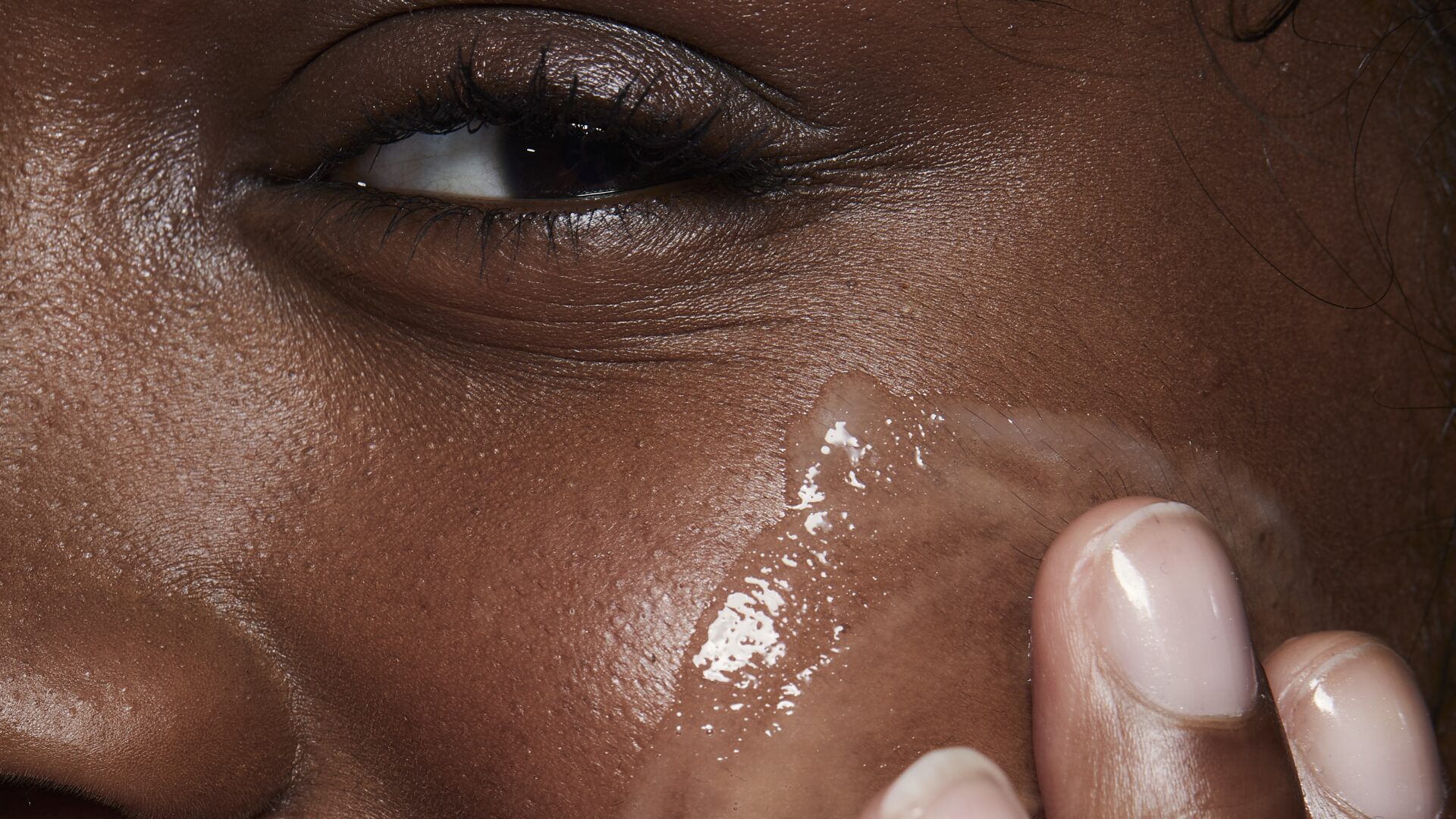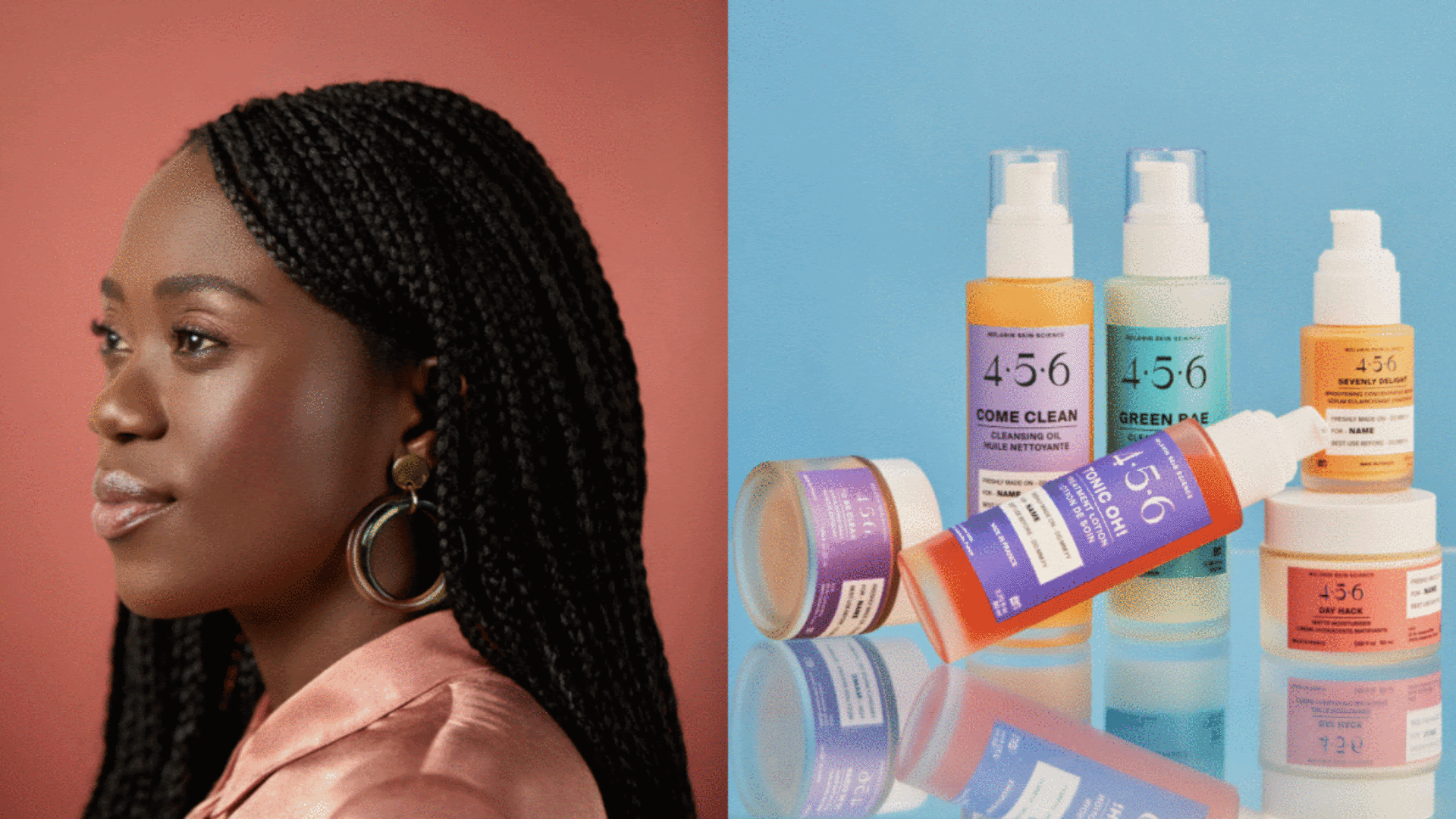
As young Black women, there’s something distinctly different and beautiful about our skin. The versatility, the hues, the freckles, the beauty marks – all of it and everything in between. However, when we dive into the realm of skincare and maintenance, our concerns tend to be a bit more specific. Lack of hydration during the colder seasons, extreme dryness, and long-lasting dark marks following acne and skin trauma are just a few of them to name.
“As a young girl growing up in Normandy and facing all of these skin conditions, I used to think that it was my Black skin that was the problem. That my skin could not comply with all of the beautiful products that were out there and somehow worked perfectly fine for caucasian skin,” said 4.5.6 Skin founder Noelly Michoux about her personal experience. “It wasn’t until I began studying the difference between all of the skin prototypes that I understood the complex structural and functional differences of melanin-rich skin.”
As the founder of 4.5.6 Skin, Michoux embarks on a daily mission to “redefine the beauty industry by addressing the global beauty market gap for non-caucasian skin” through their customized skincare products. 4.5.6 Skin, which is curated specifically for the needs of melanated skin, have created their scientifically-supported products based upon the five pillars of treating melanin-rich skin: hydration, hyperpigmentation treatment, smart oil regulation, skin revitalization, and microbiome focus.
Are sugar scrubs actually good for your face? Find out here in this explainer.

Michoux continued to gush to Girls United about 4.5.6 Skin, which she described as a “first-of-its-kind premium skincare company” that brings real results as well as joy and confidence to customers of color. “This is such a unique and fantastic time for melanin-rich skin beauty. We are in a time where women of color can be the main and sole focus of a brand, not just an afterthought,” she said.
Dr. Carlos Charles, board-certified dermatologist and founder of Derma di Colore, chimed in with his expertise about the importance of accounting for melanin-rich skin in skincare and beauty products. “There are some nuances that must be appreciated when developing products for melanin-rich skin. The most important one is that the cells responsible for the production of pigment know as the melanocytes are incredibly efficient in their ability to produce melanin in darker skin tones,” Dr. Charles added.
“They are also highly reactive and will produce excess melanin in response to any inflammation or trauma. This has to be taken into account when producing products specifically for melanin-rich skin. Specifically, exfoliating against should be delicate to minimize possible inflammation and trauma to the skin that may worsen hyperpigmentation.”
Check out these tips for transitioning your skincare routine from winter into spring routines.
Ahead, Dr. Carlos Charles, Noelly Michoux, and Imen Azaiez, Director of R&D at 4.5.6 Skin, share their knowledge with Girls United about how young girls should tackle acne, the key differences in melanin-rich ski, and what your acne says about you. Check it out below!

The Difference Between Black Girl Skin And Our Caucasian Counterparts
According to Michoux, functional and structural differences in melanin-rich skin include density, UV light protection, skin cell shedding, and sensitive darker-skinned prototypes. “Melanin-rich skin has some inherent ultraviolet light protection conferred by the increased melanin content. Since sunlight is important in the transformation of 7-dehydrocholesterol to vitamin D3, this limited ultraviolet exposure can be associated with a vitamin D deficiency in darker skin tones. This may be associated with impaired skin metabolism levels which can lead to dehydration, dull skin,” she explained.
Skincare Products And Habits To Avoid
While there are many tales about the skin of a Black woman being strong and resistant, Michoux challenges that notion and educates GU readers on the facts. “Au contraire, Black skin is uniquely sensitive especially under cold, windy, sun-less climates, which causes our skin barrier to become deregulated and makes the skin more fragile,” Michoux explained. She encouraged readers to be gentle with their skin and avoid products that may be incredibly harsh for melanin-rich skin including exfoliators, mechanical exfoliation, or formulas with high percentage acids.
“The second habit to avoid is doing too much! Customers will often come to me saying they are using three different serums, all at the same time, and still not seeing any results. Not only does this make it hard to identify which product is not working for your skin, but it is too much for your skin to handle,” Michoux continued. “Keep it simple. Three products that are right for your skin will always be better than a 10-step routine.”
Leading Causes Of Acne In Black Girls And Girls Of Color
“[For] young women of color, acne can be even more concerning as it oftentimes leads to persistent hyperpigmentation once the active component resolves,” Dr. Charles explained to Girls United. He continued to explain the main causes of acne including excess oils, hormonal influences, and skin cell division abnormalities that can lead to pimples. “These pimples can set off a cascade of events in the skin causing inflammation which in melanin-rich skin results in persistent hyperpigmentation.”

What Your Acne Says About Your Skin
The different types of acne range from temple pimples caused by stress to cheek pimples and back acne – also known as “bacne.” Dr. Charles told Girls United about the causes of each. “While nearly all forms of acne are caused by some hormonal component, acne that presents along the jawline and occasionally on the chin oftentimes is triggered by hormonal fluctuations. This type of acne more commonly occurs in the last few years of the 20s, and can be seen at any age thereafter,” Dr. Charles said.
“The initial presentation of acne during the team years is characterized as comedones also known as blackheads, as well as pustules or whiteheads. This type of acne is seen scattered throughout the face with a concentration on the forehead, cheeks, and sometimes on the chin,” Dr. Charles continued. “Deep and painful cystic acne can present in any location on the face, and can even be seen on the back and chest. This form of acne typically has a genetic component and it is common that one or both of the parents experienced a similar type of acne in their life.”
How Stress Plays A Role In Acne And Breakouts For Young Girls
Azaiez offered her expertise as the co-founder of 4.5.6 Skin about the effects of emotional stress on young Black girls and girls of color. “Emotional stress has long been suspected to trigger or exacerbate acne, however, its influence on acne severity has been underestimated until the findings of recent scientific studies. Psychological stress can alter the immune and barrier functions of the skin. High levels of stress can affect the gut microbiome, inflammation, and your body’s glycemic control which all can lead to acne breakouts,” she offered.
Photo Credit: 4.5.6. Skin/Six-One Agency